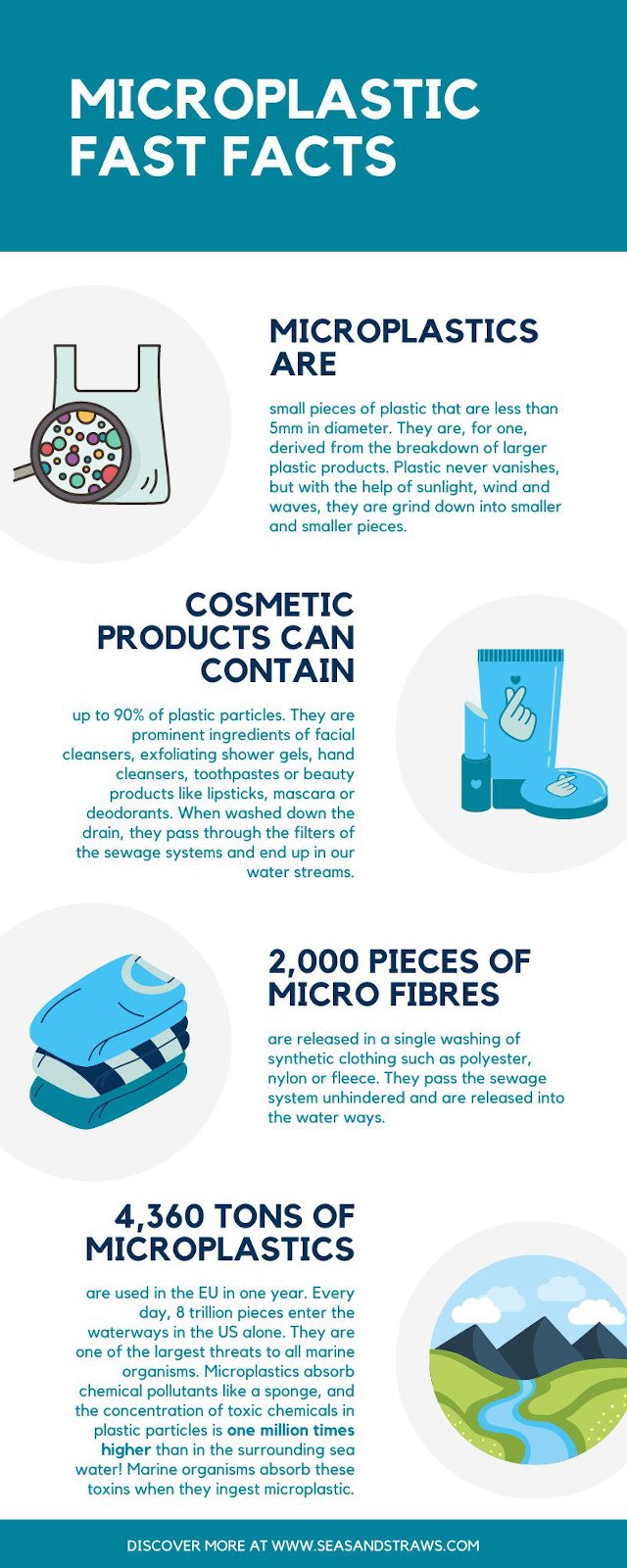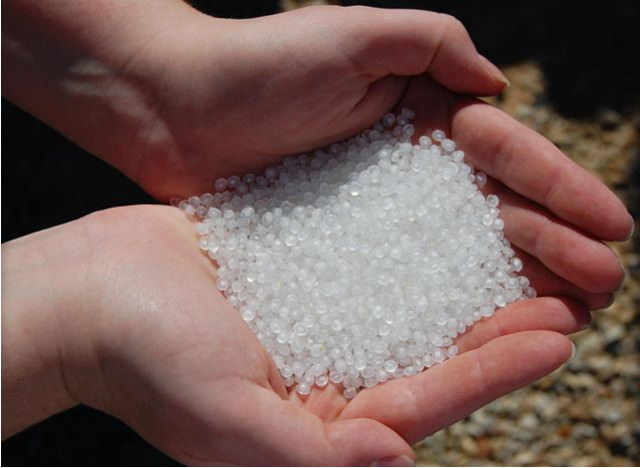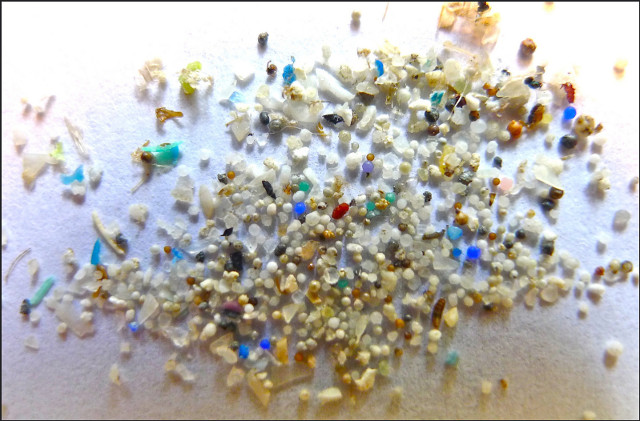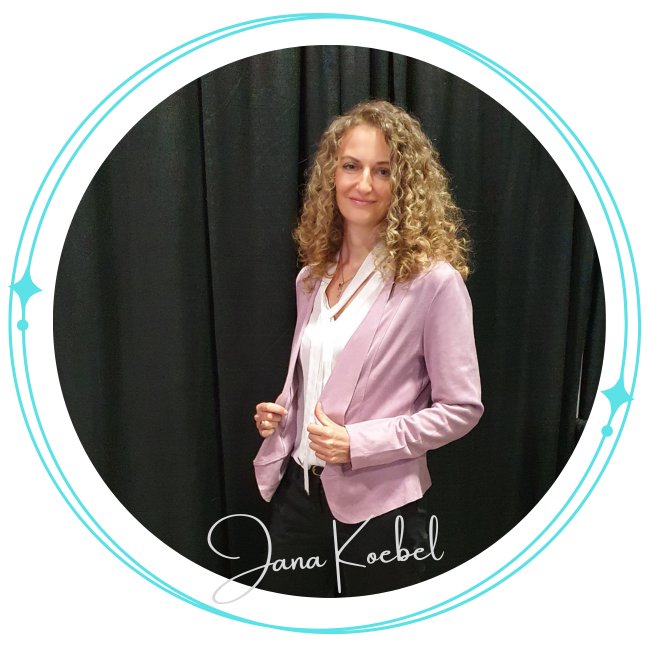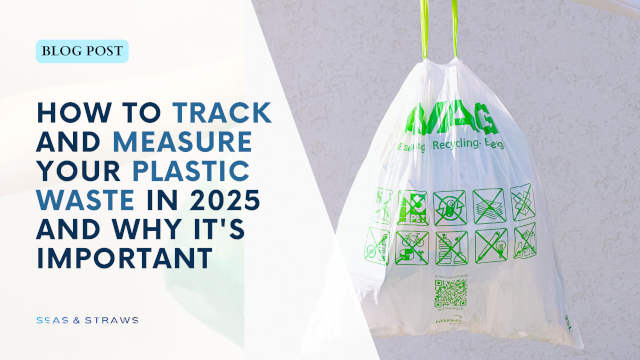- Home
- Plastic at Home
- Microplastic
- Microplastics in Food
Microplastics in food
Microplastics are microscopic plastic particles that are smaller than 5mm in size. There are two types: primary microplastics are tiny, such as microbeads found in personal care items. Secondary microplastics, on the other hand, begin as bigger plastic products such as plastic bags but degrade over time into microplastic particles. The tiniest fragments cannot be seen with the naked eye.
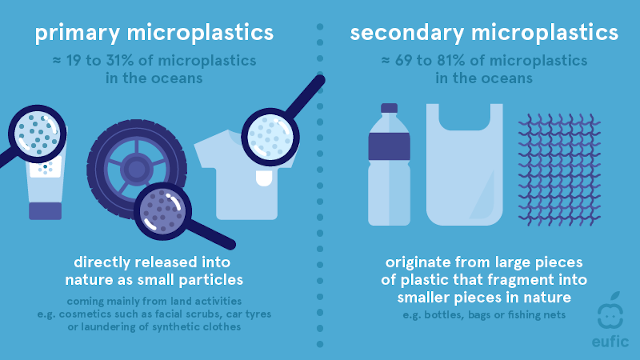 Primary vs secondary microplastics. Source: eufic.org
Primary vs secondary microplastics. Source: eufic.orgCan Microplastics be found in food?
Microplastics may move great distances on sea currents. They can be found at the surface of the seas, on beaches, in arctic sea ice, and in deep marine deposits. Fish, seagulls, and other marine animals mistake microplastics for food and consume them. They then become part of the human food chain when eaten by aquatic animals.
Microplastics have already been found in the human blood and faeces.
Studies have looked at the possibility of them being present in sea salt, honey, beer, and bottled water.
These foods typically contain microplastics:
- bottled water
- seafood
- beer
- sea salt
- tea bags
Considering the millions of tonnes of plastic trash we dump into the sea every year, it shouldn't be a surprise that the average person eats at least 50,000 particles of microplastic a year and breathes in a similar quantity.
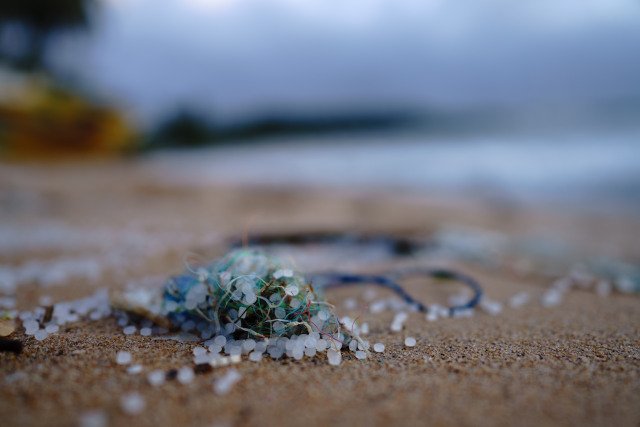 Microplastics can be found in every part of the earth, in every ocean.
Microplastics can be found in every part of the earth, in every ocean.How do Microplastics in food affect us?
The scientific knowledge on potential microplastic exposures and health hazards in the food supply is continually emerging.
Although it is unclear how plastic impacts human health, research indicates that breathing in microplastics might cause respiratory tract irritation and inflammation, leading to cancer, asthma, and damaged lung tissues. Another study demonstrates that fish and other marine species with high levels of microplastics in their respiratory and digestive systems die at a considerably faster rate.
While research is ongoing, there are still many unknowns about microplastics and their impact on human health. In addition to the previously mentioned, scientists are investigating the buildup of microplastics in people over time, such as after inhaling it through the air or consuming it through our food.
It is also being investigated if characteristics such as size, shape, place of entrance, and chemical makeup determine how harmful microplastics may be for people. Surprisingly, there are some similarities between microplastics and other, far more extensively researched nanomaterials. When studying the consequences of microplastics in food, scientists may build on this current information and lessons learnt.
However, here’s what we do know:
- They mimic and disrupt the natural functions of hormones, leading to negative health effects and increasing a person’s risk of chronic conditions.
- Increasing risk of chronic diseases by creating the pre-conditions that allow type 2 diabetes to exist.
- Impairing immune health (increased inflammation induced by exposure to microplastics leads to poor gut health and, by extension, weakened immunity.)
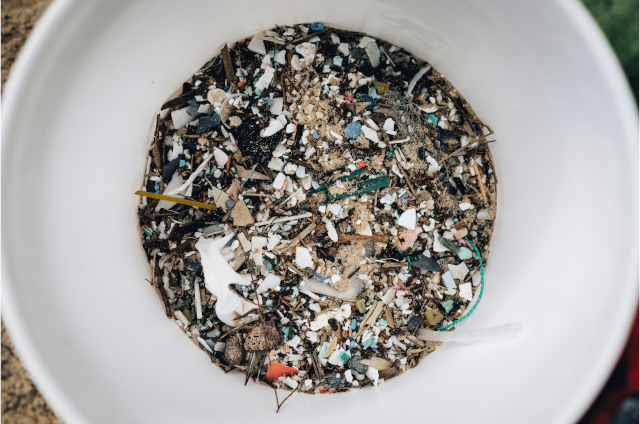 We eat 50,000 particles of microplastic and breathe in a similar quantity every year.
We eat 50,000 particles of microplastic and breathe in a similar quantity every year.What Can we do?
Avoiding plastics as much as possible is key. You can do so in the following ways:
- Limit high-processed foods that may have a lot of plastics involved in processing and packaging.
- Choose eco-friendly packaging (did you know that heat causes chemicals to be leached from plastics into the content of the container?).
- Use plastic-free water bottles and food containers.
get the facts!
Want to arm yourself with more facts? Save or download this handy summary on microplastics. You can share it freely, I just ask that you credit Seas & Straws.
Download the fact sheet (pDF)
Click here to download your fact sheet on microplastic.
Want to make your home toxin-free, healthy and sustainable, too, but not sure where to start?
Microplastic is a big problem in your home. It's simply everywhere! If you want to reduce the amount of microplastic that you breathe in and ingest every day, and make your home healthy and safe for your children but aren't sure where to start, I'd love to help you! Email me on jana@seasandstraws.com or click here. In the meantime, check out my blog post about my Plastic-Free Coaching, here!
